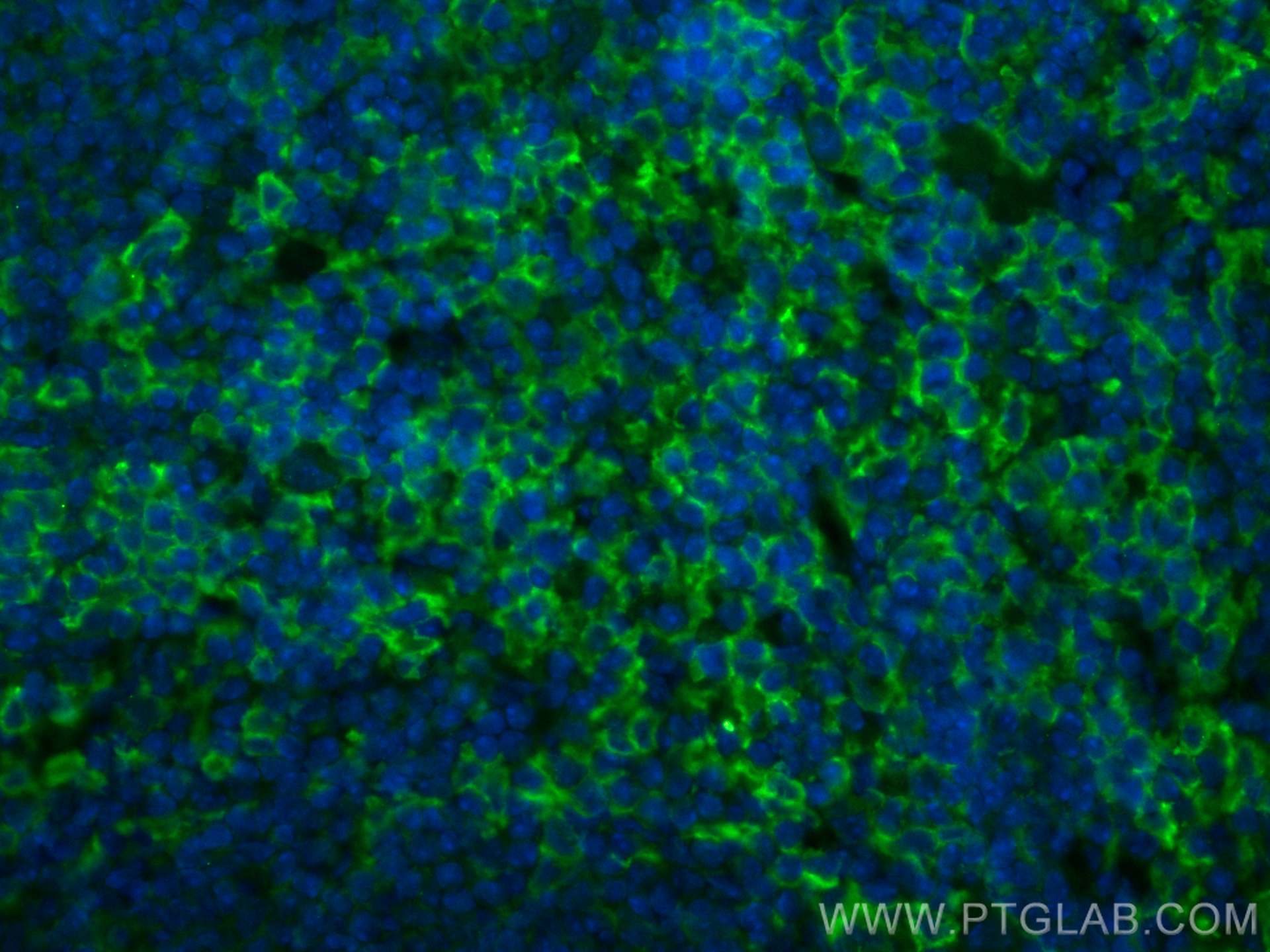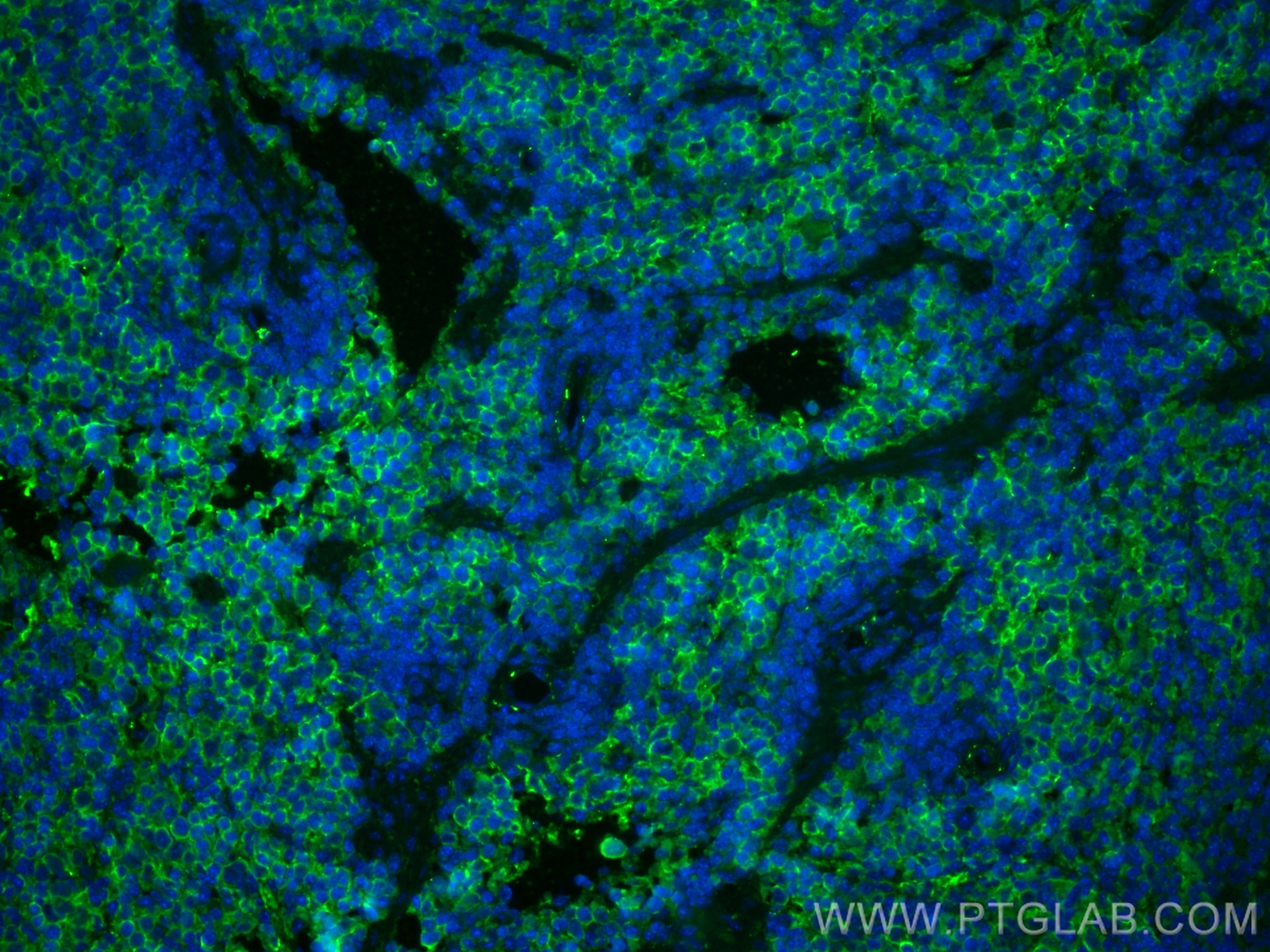Anticorps Polyclonal de lapin anti-F4/80
F4/80 Polyclonal Antibody for IF-P
Hôte / Isotype
Lapin / IgG
Réactivité testée
souris
Applications
IF-P
Conjugaison
CoraLite® Plus 488 Fluorescent Dye
N° de cat : CL488-28463
Synonymes
Galerie de données de validation
Applications testées
| Résultats positifs en IF-P | tissu splénique de souris, |
Dilution recommandée
| Application | Dilution |
|---|---|
| Immunofluorescence (IF)-P | IF-P : 1:50-1:500 |
| It is recommended that this reagent should be titrated in each testing system to obtain optimal results. | |
| Sample-dependent, check data in validation data gallery | |
Applications publiées
| IF | See 1 publications below |
Informations sur le produit
CL488-28463 cible F4/80 dans les applications de IF-P et montre une réactivité avec des échantillons souris
| Réactivité | souris |
| Hôte / Isotype | Lapin / IgG |
| Clonalité | Polyclonal |
| Type | Anticorps |
| Immunogène | F4/80 Protéine recombinante Ag28252 |
| Nom complet | EGF-like module containing, mucin-like, hormone receptor-like sequence 1 |
| Masse moléculaire calculée | 102 kDa |
| Numéro d’acquisition GenBank | NM_010130 |
| Symbole du gène | F4/80 |
| Identification du gène (NCBI) | 13733 |
| Conjugaison | CoraLite® Plus 488 Fluorescent Dye |
| Excitation/Emission maxima wavelengths | 493 nm / 522 nm |
| Forme | Liquide |
| Méthode de purification | Purification par affinité contre l'antigène |
| Tampon de stockage | PBS with 50% glycerol, 0.05% Proclin300, 0.5% BSA |
| Conditions de stockage | Stocker à -20 °C. Éviter toute exposition à la lumière. Stable pendant un an après l'expédition. L'aliquotage n'est pas nécessaire pour le stockage à -20oC Les 20ul contiennent 0,1% de BSA. |
Informations générales
Mouse F4/80, also named as EMR1 and Gpf480, is a 160kd cell surface glycoprotein which is a member of the EGF TM7 family. The F4/80 molecule is solely expressed on the surface of macrophages and serves as a marker for mature macrophage tissues, including Kupffer cells in liver, splenic red pulp macrophages, brain microglia, gut lamina propria and Langerhans cells in the skin. The function of F4/80 is unclear, but it is speculated to be involved in macrophage adhesion events, cell migration or as a G protein-coupled signaling component of macrophages.
Protocole
| Product Specific Protocols | |
|---|---|
| IF protocol for CL Plus 488 F4/80 antibody CL488-28463 | Download protocol |
| Standard Protocols | |
|---|---|
| Click here to view our Standard Protocols |




